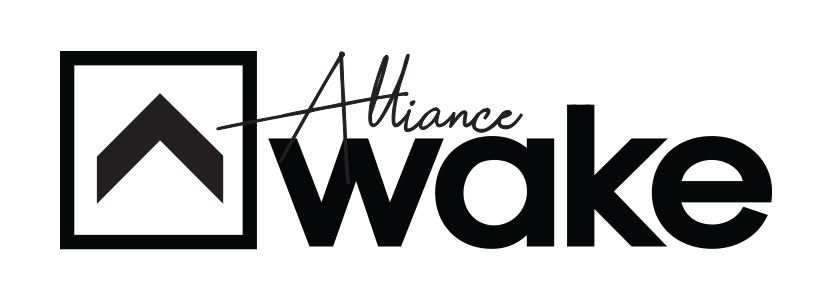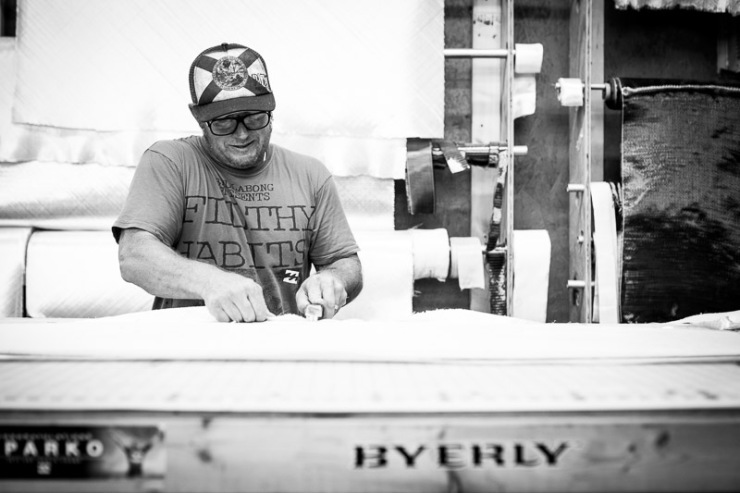Inside: Scott “Butch” Bouchard
Scott “Butch” Bouchard
Florida + Caribbean Sales Rep – Billabong/RVCA
Co-Owner/Co-Founder – Byerly Brand
When you say the name “Butch” around the inner circles of wakeboarding it always refers to one man: Scott Bouchard. Born and raised on the beaches of Florida as a surfer kid, Butch was first introduced to wakeboarding in the early days of directional boards and sandal straps. Back then he was a pro surfer sharing some common sponsors with a few of the wakeboarders. After hanging out with OG’s like CC Roberts and Scott Byerly, Butch quickly grew to love the sport and the lifestyle. These days you know Butch as one of the most progressive shapers in the sport, the co-owner of Byerly Boards with Scott, and the Florida/Caribbean sales rep for Billabong and RVCA. Basically he is one of the busiest guys on the planet, but he is also one of the nicest guys you’ll ever meet. Here is our Inside interview with the one-and-only Butch from the Oct/Nov issue of Alliance Wake.

Butch at work in his home shop Photo: Rutledge
Alliance: How did you first get into wakeboarding?
SB: On the tail end of my surf career with Billabong, Reef and Arnette I became the team manager. I handled the surf and skate athletes. Then the companies added this new sport that I knew nothing about called wakeboarding. The only wakeboarder I knew was CC Roberts from surfing. He took me riding for the first time at his place, which happened to be Byerly’s lake. I was hooked on the first pull and headed back to Orlando and Scott’s lake every chance I got.
A: When did you get into shaping wakeboards?
SB: It was 1997. Originally I was making boards for myself just like I did when competing on the surf tour. Then I started shaping boards for Scott Byerly in the late Wake Tech days. Working with Scott was sick because so many talented riders hung and rode with him. He also had a core crew that represented wakeboarding the way I thought it needed to go to make it a legit action sport. Scott’s crew included Randy Harris, Brandon Meek, Sarah Cline, Eric “Gator” Lutgert, and CC Roberts to name a few. These guys all had so many ideas of how boards could be better. At the time all boards were super narrow like a water ski with flat bottoms and huge ass fins. Basically they were really only good for raleys. Scott, Randy and Brandon had the vision of these wide profile boards that rode fast and loose on the water more like a snowboard. With that feedback I started shaping away and that’s how I came up with the first finless boards.
That changed what wakeboarders rode. If you look at any board today you will find so many features that Scott and his crew helped me come up with that are now industry standard.
A: You’re known for trying some crazy techniques and materials when it comes to making a wakeboard, what do you think is the most important aspect of a board?
SB: Back in the day I would have said shape. Today with all the testing and building of one-off product at my shop I say construction. I own a production press and molds right here in Satellite Beach, FL, which helps for working with team riders. It’s been such a major advantage growing up in the Florida Space Coast area where there are so many composite engineers. My backyard is the place that has set the standard in surfing – both in construction techniques and talent. I have so many people here to brainstorm with it’s almost an unfair advantage for Byerly Boards.
A: How has your philosophy of wakeboard shapes and materials changed over the years?
SB: My shapes continue to get faster with smoother rocker blends and more subtle features since the new school riders know how to maximize their edge control so well. With construction our philosophy changes every day as new aerospace materials and our methods merge! I love building boards and the challenge of creating wake composites. Our top priority is to build boards with methods noone has ever thought of – to the degree that every shape in the Byerly line is built with completely unique construction methods we invented to enhance the shape’s ride. We have so many new ideas developed and tested we even continue to change the construction methods on existing shapes. For example Rathy’s AR-1 is on its third completely new build method for 2015.
Having his shop and press in Florida has allowed Butch to work closely and quickly with the Byerly athletes Photo courtesy: Buywake.com / DMND
A: Byerly is arguably the most iconic name in wakeboarding and wakeskating, but were you ever worried Byerly Boards wouldn’t survive?
SB: Heck yes I was worried! I’m the guy who negotiated the Byerly brand deal and I felt a huge commitment to Scott and his family to make it work. Scott is not only my business partner but one of my closest friends. We came out launching a legit high-end wakeboard line in some of the toughest financial times ever. Most of the industry makes their money off price-point package boards and tubes. We chose to have neither. What we did have was Scott’s name and our belief we could build things better. It was a big gamble and we are thankful for all the support from the industry, athletes, and friends.
A: What do you see as wakeboarding’s biggest hurdle to breaking out into the action sports realm?
SB: Until wakeboarding can create a lifestyle it’s hard to get to that next level. We are in a sport where too many of the companies’ managers and owners don’t even ride anymore. I’m from the surf industry where the companies’ leaders still live the lifestyle and rip everyday! It’s going to take new blood to get this sport to the next level. There is currently way too much influence towards the pro tour and how things were done back in the day. If you bring any core outsider to a wake tour event they are bored after watching the third or fourth guy off the dock. Everyone rides down the same lake with the same wake and a couple little cheesy rails. You’re watching the same old shit. It’s the free ride and park aspect of the sport we need to push to make it to grow.
A: What about wakeboarding has you most excited for the future?
SB: Huge kickers, rails and gaps… The ability to take things to the next level. The new generation of athletes and former athletes that still ride stepping up to the plate to run this show. They are our future!!
A: What about wakesurfing has you most excited for the future?
SB: First of all being a surfer it’s fun as shit! It’s something everyone can do and progress at quickly. This is going to be the biggest growth area for our current sport.
A: In your opinion, does wakesurfing have the legitimacy to become its own entity as a sport – with a paid tour, sponsored athletes, etc?
SB: This is a hard one to answer without offending anyone. My family and I love to wakesurf but it has some limitations for sure. Being a surfer who competed his whole life to make it to the professional level this is my perspective: Wakesurfing is fun as a hobby, but not a sport. There is not enough of a risk versus reward factor to make it a sport. Surfers compete in conditions that you are trying to survive in as well as rip. Paddle out at Pipeline, Cloudbreak or Teahupo’o and if you make it back to the beach you will see what I mean. The fact you will never ride the same wave twice in the ocean makes you adapt and have way more creativity to your approach. Also style is one of the most important things in surfing. No one cares what tricks you can do if you’re standing like a stinkbug and can’t flow between your turns. Take a good look how Tommy Coleman, Josh Kerr or Keenan Flegel surf behind the boat. They each rip and have mad style from riding waves in the ocean. That’s something you can’t teach behind the boat since it’s a gutless soft little wave that you can’t even do a proper bottom turn on. With all this being said yes there will be a pro tour with endorsed athletes. It will just be hard for boat surfers to ever get respect from the core boardsport community since there is no real consequences on a two-foot boat wake!

Getting some endless waves at the secret Bouchard family vacation lake






















February 2, 2015
Enjoyed this! Great insights and perspectives! Good stuff!
February 3, 2015
I love that he sets the record straight on what wakesurfing really is. Butch is rad!
July 19, 2016
Butch ran across this checking out wakeboards ,your the man . Greg jones and kirk san clemente above state park Floridians go home !!!!!!!!